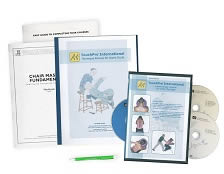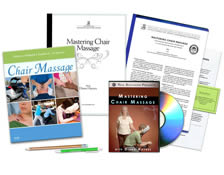 Want to earn continuing education credit for this article? Learn more.
Want to earn continuing education credit for this article? Learn more.
UPDATED June 2015
Nearly every person entering the field of massage therapy is fueled by a passion to help people better realize their capacity for wellness. As the connection between stress and declining wellness is repeatedly proven by the scientific community, massage’s ability to ease stress is becoming increasingly important. Therapists motivated to help steer people toward good health can realize this goal by bringing bodywork to one of the most prevalent locations breeding stress: the workplace.
Depression and Stress
While the repercussions of job stress can appear in various ways, its manifestation into depression has recently been documented. According to a University of Rochester study, job stress and a lack of social support in the workplace were associated with major episodes of depression in men. While job strain was not associated with major depression among the women in this study, the investigators suggest further research for identifying the source of this gender difference.
Published in the November 2007 American Journal of Public Health, lead author Emma Robertson Blackmore, PhD, stated “Depression in the workplace is a major public health problem that requires intervention yet remains under-recognized and under-treated.” However, employers may be able to reduce the incidence of depression by providing an avenue for their workers to relieve stress.
Massage Therapy
Massage therapists hoping to gain employers as clients have plenty of evidence to support their campaign. As the second leading cause of disability worldwide, depression reduces the productivity of employees, increases the frequency of worker absences and can lead to premature retirement. Because massage therapy has been shown to reduce the physiological markers of stress and depression, companies recruiting massage professionals for their workers will have several advantages over those who do not.
Some of the evidence is described below:
- A study conducted by the Touch Research Institutes at the University of Miami School of Medicine in Florida, found that massage eases anxiety and depression, as well as leg and back pain, in depressed pregnant women.
- A study conducted at the Duquesne University School of Nursing in Pittsburgh, Pennsylvania found that a 20-minute back massage enhanced mood and reduced stress in the spouses of cancer patients.
- In a study published in the journal Anesthesiology, ear acupressure was shown to help reduce stress and anxiety in those being transported to a hospital via ambulance.
The Workplace
Nearly half of the average person’s waking weekday hours are spent at work. Because separating what you do with how you feel is beyond human control, prolonged stressful work situations typically reveal themselves in physical or emotional health issues. Some facts highlighting the relationship between work and stress include:
- According to the American Institute of Stress, workplace stress costs the nation more than $300 billion each year in health care, missed work and stress reduction efforts.
- According to a LLuminari® Landmark Study, 20 percent of all workers are at risk for stress related health problems.
- The LLuminari® Landmark Study found that 10 percent of workers are so tired at the end of their work day that they do not enjoy their non-work time.
- The LLuminari® Landmark Study also reported that 20 percent of workers stated that their work regularly interfered with their responsibilities at home and kept them from spending time with their family.
- According to the National Institute for Occupational Safety and Health, workers who report they are stressed incur health care costs that are 46 percent higher, or $600 more per person, than other employees.
Massage in the Workplace
An ideal way to bring bodywork into the workplace, chair massage can change the daunting reign of stress and depression at work. Since chair massage can be performed in a small space without requiring much privacy and can easily be scheduled during a 15-30 minute break, it rarely poses any logistical challenges. According to research published in a 1996 edition of The International Journal of Neuroscience, chair massage recipients experienced enhanced alertness, lower anxiety levels, less depression and lower levels of job stress.
Instituting a chair massage program demonstrates an employer’s commitment to the health and well-being of their employees. Chair massage techniques have been shown to measurably lower daily stress levels and may even reduce depression. Benefits of bodywork done in the workplace include a decrease in stress-related employee turnover, less absenteeism, improved morale, workers more likely to cooperate and lowered company healthcare costs.
Whether a therapist practices massage on a stressed worker after hours in a massage studio or during an employee’s lunch break at their office, they can help their clients realize their potential for wellness. By bringing chair massage into a business, a practitioner opens a route to impact more stressed employees in a shorter period of time. To reduce the stress and depression so common in the workplace, massage therapists who bring their skills to a busy office are lucky – because they can really make a difference.
Earn continuing education credit for this article contained in our Benefits of Onsite Massage series. Click here to enroll.
[php]
show_banner_ad(215);
[/php]

















